10 Effective Strategies for SMEs to Boost Their ESG Metrics
Environmental, Social, and Governance (ESG) metrics have become more than just a corporate buzzword. With increasing attention from stakeholders, consumers, and investors on sustainable practices, ESG metrics have evolved into key indicators of a company's commitment to responsible and sustainable growth. For Small and Medium-sized Enterprises (SMEs), achieving favorable ESG metrics can differentiate them from the competition and bolster their growth prospects.
What is ESG?
ESG stands for Environmental, Social, and Governance. It represents a set of principles that businesses can adopt to integrate sustainability and responsibility into their operations. Environmental factors focus on a company's impact on the planet, social factors on its relationship with stakeholders and communities, and governance on its internal processes and ethics.
Why is ESG Important?
ESG has emerged as a crucial framework for businesses looking to create long-term value and address societal challenges. By considering environmental and social impacts, companies can minimize risks, enhance reputation, and attract responsible investors. Good governance practices ensure transparency, ethical conduct, and accountability, fostering trust among stakeholders.
How Can ESG Help Businesses Thrive Sustainably?
Embracing ESG principles can drive tangible benefits for businesses. By adopting sustainable practices, companies can streamline operations, reduce resource waste, and lower costs. ESG-oriented strategies attract a more diverse and engaged workforce, leading to increased productivity and innovation. Moreover, businesses that prioritize ESG are better equipped to navigate regulatory changes and address evolving consumer preferences.
For SMEs, integrating strong ESG practices can foster sustainable business growth and enhance stakeholder trust. Here are 10 actionable steps SMEs can take to elevate their ESG performance.
1. Implement Energy-efficient Practices
Audit and Adjust: Begin with a comprehensive energy audit to pinpoint areas of energy wastage. For instance, heating, ventilation, and air conditioning (HVAC) systems often consume disproportionate amounts of energy if they're not optimized or regularly maintained.
Go Green with Appliances: Beyond just swapping out for energy-efficient bulbs, think about all your office devices and machinery. For instance, ENERGY STAR-certified computers and printers typically use 40% less energy than their non-certified counterparts.
Building Insulation: Adequate insulation can significantly reduce energy consumption. This includes everything from roof insulation to double-glazed windows, which can help maintain indoor temperatures, reducing the burden on HVAC systems.
Smart Systems: Consider installing energy management systems or smart thermostats that adapt heating or cooling according to room occupancy or time of day.
Transportation: If your business involves a fleet of vehicles, consider transitioning to hybrid or electric vehicles. Alternatively, incentivize employees to use public transport, carpool, or cycle, thereby reducing the carbon footprint associated with commuting.
2. Adopt Sustainable Sourcing
Supplier Scrutiny: While vetting suppliers, go beyond cost-effectiveness. Ask for their environmental policies, carbon footprints, or any sustainability certifications they might possess.
Material Matters: Opt for materials that are recycled, biodegradable, or sustainably sourced. For instance, if you're in the fashion industry, materials like organic cotton, Tencel, or recycled polyester can be viable options.
Packaging Innovations: Rethink packaging by using recycled materials or designs that minimize waste. Companies like Lush use packaging-free solutions for many of their products, while others have adopted biodegradable or compostable packaging.
Local Sourcing: Whenever possible, source materials or products locally. This not only supports local economies but also reduces carbon emissions linked with transporting goods over long distances.
Collaborative Consumption: For some SMEs, it may be worth exploring collaborative consumption models, pooling resources with other businesses to achieve economies of scale without compromising on sustainability.
3. Enhance Waste Management
Waste Not, Want Not: While striving for a zero-waste model, initiate practices such as donating unused items. Restaurants, for instance, can collaborate with food banks or distribution networks to ensure surplus food doesn't go to waste.
Recycle and Upcycle: Establish distinct bins for different waste types – paper, glass, plastics, organic waste, etc. Partner with local artisans or businesses that could upcycle waste materials. For instance, old fabrics might be repurposed into bags or accessories.
Digital Transition: Reduce paper waste by transitioning to digital alternatives. From invoices to employee training manuals, a shift to digital can dramatically cut down on paper consumption.
Eco-friendly Disposables: If disposables are an essential part of your business, like in cafes or eateries, opt for compostable plates, cutlery, and cups.
Employee Training: Regularly educate and engage employees about waste management strategies. The more integrated they are in the process, the more effectively the strategies will be executed.
4. Promote a Diverse and Inclusive Workforce
Beyond Hiring: Diversity should permeate every layer of a company. This involves ensuring representation at board and executive levels, not just at entry or middle management.
Mentorship Programs: Implement mentorship programs that aid underrepresented groups in navigating workplace challenges, ensuring they have an equal shot at growth and leadership opportunities.
Employee Resource Groups (ERGs): Foster the formation of ERGs for different groups, such as those for LGBTQ+ employees, women, or ethnic minorities. These groups can offer support, drive community initiatives, and inform company policies.
Diversity Training: Regular workshops and training sessions can help in addressing unconscious biases and fostering a more inclusive work environment.
Diverse Suppliers: Extend diversity principles to your supply chain. Seek partnerships with businesses owned by women, minorities, or other underrepresented groups.
5. Implement Flexible Work Models
Remote Work Infrastructure: Tools like Zoom, Slack, and Trello can facilitate seamless remote collaboration, ensuring teams remain connected even when geographically dispersed.
Flex-time Benefits: Instead of the traditional 9-to-5, allow employees to start their day earlier or later, catering to their personal schedules and peak productivity times.
Job Sharing: This allows two employees to share the responsibilities of one full-time position, offering each a part-time schedule. It can be particularly beneficial for those with family commitments or pursuing higher education.
Shorter Workweeks: Consider a four-day workweek or compressed schedules where employees work longer hours but fewer days. Research suggests that such models can boost productivity and employee well-being.
Childcare Support: For businesses with on-site capabilities, providing childcare facilities can significantly benefit working parents. Even subsidizing childcare costs can be a big step towards flexible support.
6. Engage in Community Initiatives
Local Partnerships: Collaborate with local schools, offering internships or workshops that help students acquire real-world skills.
Skill-based Volunteering: For instance, if you run an IT firm, offer to set up computer labs for community centers or provide digital literacy workshops for seniors.
Sponsorship: Sponsor local sports teams, arts festivals, or community events. This not only fosters goodwill but also boosts your brand's visibility in a positive context.
Employee-driven Initiatives: Allow employees a certain number of paid hours per month to engage in community service or charity work of their choice.
Fundraisers and Drives: Host or participate in fundraisers for local causes or organize drives, be it for food, books, clothes, or toys, to support local shelters, schools, or organizations in need.
7. Adopt Transparent Reporting
Regular ESG Updates: Instead of solely focusing on annual reports, consider bi-monthly or quarterly ESG updates. These frequent insights can better depict real-time efforts and allow stakeholders to feel more involved and informed.
Stakeholder Feedback:
Feedback Platforms: Utilize digital platforms to gather stakeholder feedback after releasing sustainability or governance reports.
Focus Groups: Organize small focus groups to delve deeper into specific ESG areas, allowing for in-depth discussions and actionable feedback.
Third-party Audits: Collaborate with external auditors to evaluate your ESG performance. This not only ensures accuracy but also boosts credibility as it showcases transparency and accountability.
Interactive Reporting: Employ digital tools to create interactive ESG dashboards or infographics. This makes information more digestible and engaging for stakeholders.
Case Studies: Incorporate real-life case studies in your reports, showcasing tangible instances of your ESG strategies in action, thus humanizing data and making it more relatable.
8. Continual Education and Training
ESG Onboarding: Integrate ESG principles right from the start. For instance, new employees could be given a brief on past sustainability projects, current goals, and expected contributions.
Regular Workshops:
External Experts: Invite external ESG experts or activists for seminars, thereby offering a fresh perspective to your team.
Internal Showcases: Encourage departments to share their ESG successes and challenges in quarterly presentations, fostering intra-company learning.
Digital Resources: Maintain an internal digital library packed with ESG-related literature, documentaries, case studies, and online courses. This ensures that employees always have access to resources to further their understanding.
Certifications: Offer to cover expenses, either partially or wholly, for employees who wish to acquire certifications in sustainability, ethical governance, or any other ESG-related domain.
Collaborative Projects: Foster partnerships with local universities or NGOs for joint ESG projects. Such endeavors can serve as hands-on training opportunities for employees while contributing to tangible community betterment.
9. Foster Stakeholder Collaboration
Collaborative Platforms: Implement digital platforms, such as collaboration tools or dedicated forums, where stakeholders can openly discuss, share insights, or suggest improvements related to ESG initiatives.
Roundtable Discussions:
Sector-specific Forums: Host regular discussions focusing on specific sectors or issues. For instance, a roundtable on sustainable procurement can involve suppliers, procurement managers, and environmental experts.
Open Forums: Organize sessions where stakeholders from various backgrounds come together to brainstorm holistic ESG solutions.
Joint Projects: Initiate projects where multiple stakeholders play a role. For instance, a sustainability drive might involve suppliers providing eco-friendly materials, customers offering feedback, and local communities benefiting from the outcomes.
Stakeholder Surveys: Regularly distribute surveys gauging stakeholder opinions on your company's ESG performance, thereby ensuring you're aligned with their expectations and concerns.
Feedback Reward Systems: Encourage stakeholders to provide constructive feedback by offering incentives, like discounts or feature spots in company newsletters, to those who make valuable contributions.
10. Embrace Technological Solutions
ESG Analytics Tools: Adopt software solutions that can monitor, analyze, and report on various ESG metrics. This streamlines data collection and offers actionable insights based on real-time analytics.
Supply Chain Monitoring: Use technologies like blockchain to create transparent and traceable supply chains. This can help verify the sustainability claims of suppliers and ensure ethical sourcing.
Energy Management Systems: Advanced systems can monitor energy consumption patterns and adjust usage in real-time, ensuring optimal efficiency in facilities or operations.
AI and Machine Learning: Utilize AI-driven platforms to predict future ESG trends or challenges. For instance, by analyzing vast data sets, machine learning can offer insights into potential resource shortages, helping businesses adapt in advance.
Virtual Reality (VR) and Augmented Reality (AR): Use these technologies for stakeholder engagement. A VR tour can show stakeholders your company's sustainability initiatives in action, offering a more immersive understanding than traditional reports.
Conclusion
Incorporating robust ESG metrics is not about ticking boxes; it's a genuine commitment to sustainable and ethical growth; it's an authentic commitment to sustainable and ethical growth. In today's evolving business landscape, stakeholders, from consumers to investors, place increasing importance on how businesses interact with the world around them. It's no longer enough to simply offer a product or service; the process behind its creation, the treatment of employees, and the broader societal implications are under scrutiny.
For SMEs, this presents both a challenge and an opportunity. While there may be hurdles to navigate in the short term, especially given resource constraints, the long-term benefits of a solid ESG framework are manifold. Beyond the obvious environmental and social advantages, there are tangible business benefits, including enhanced brand loyalty, better stakeholder relationships, and potential access to a growing pool of impact-focused investors.
Furthermore, in an era of information transparency, businesses that do not prioritize ESG risk reputational damage, which can have cascading effects on customer loyalty and shareholder trust. Conversely, SMEs that choose to champion ESG principles set themselves apart as forward-thinking, responsible entities, laying a foundation for sustainable growth and longevity in their markets.
In essence, integrating and prioritizing ESG metrics is about future-proofing businesses. It's an investment in a more sustainable, ethical, and prosperous future for everyone involved.
Is there any other initiative you consider key for SMEs to boost their ESG metrics? Drop us a message!
Jaime Amoedo is an Executive Director and co-founder of The ESG Institute.







